4.8 Keeping the Ecosystem Safe
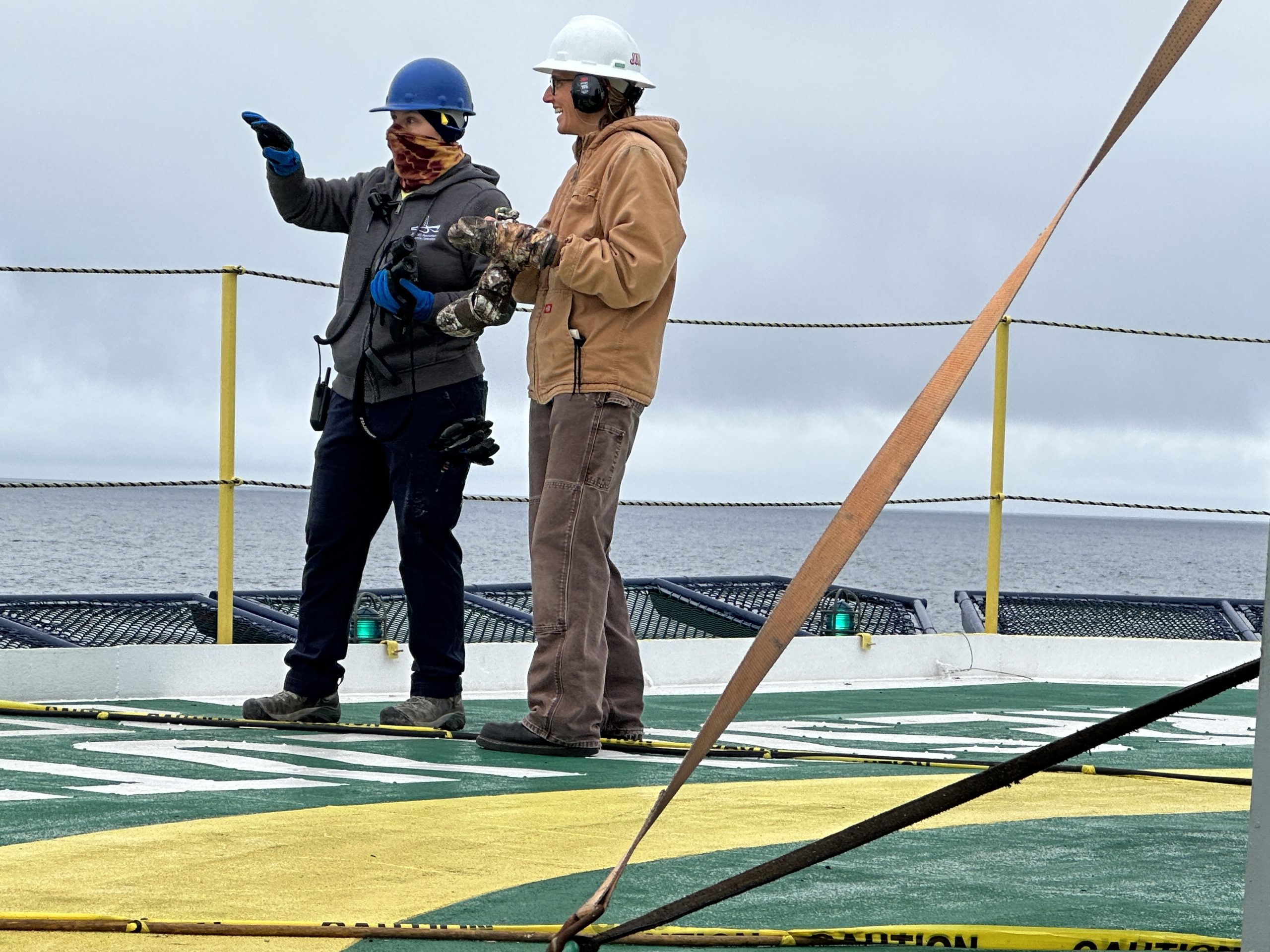
The Protected Species Observer Watch (PSO Watch) played a vital role in Vertical Seismic Profiling (VSP). In the profiling process seismic data was collected within the drilled borehole after the core is removed. Before and during the seismic operations, the PSO Watch team vigilantly scanned the horizon for diving birds, whale spouts, and other signs of animal activity
Why Do Scientists Value VSP?
Seafloor cores provide scientists with the details and contents of sediment and rock layers in the expedition study area. The layers and features within the cores help to reconstruct past environments, especially when they are correlated to the regional geology, and to each other. Vertical Seismic Profiling (VSP) is crucial to the correlation.
Images of sediment layers, like the one below, are made from data collected by a seismic survey carried out over a large area. These “seismic profiles” provide a broad view of subsurface geology. Features and layers are mapped from the travel times of signals moving from a sound source, into the layers, and back to a receiver.
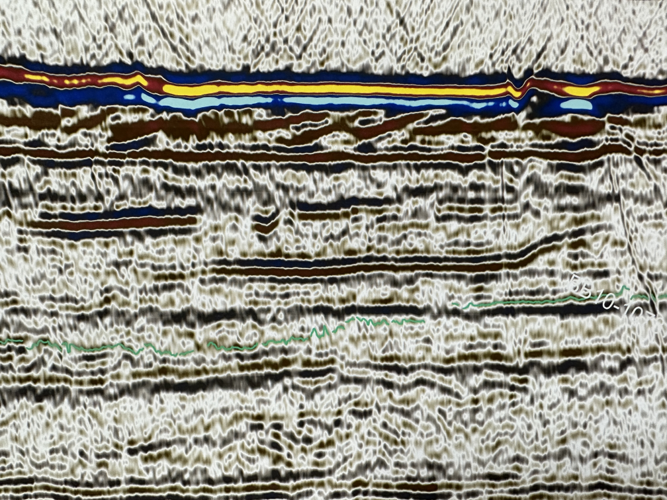
As the sound waves move through the Earth, they bounce off some layers and bend through others. Each wave’s travel time is recorded, but the actual depth of each feature or layer is not yet known.
Here’s where VSP comes in.
At a drill site, the Vertical Seismic Profile (VSP) collects seismic signal travel times at known depths. The travel time data from the VSP and the seismic survey are then correlated. Depth values are now added to the seismic profile, along with detailed data on transitions between sediment or rock type.
A crucial tool for VSP is the air gun. This device releases high pressure air through the water and into the sediment and rock beneath the seafloor. The sudden burst of energy generates a loud sound that travels as seismic waves. The waves are received by sensors, called geophones, attached to the drill hole wall.
VSP Operates Within Environmental Guidelines
VSP is great for mapping buried sediments, but can potentially harm marine life, including protected species. To minimize these risks during IODP Expedition on JOIDES Resolution trained crew members conducted a PSO Watch during seismic profiling operations in accordance with the requirements and guidelines outlined in the environmental evaluation for the expedition. The IODP Environmental Protection and Safety Panel (EPSP) is an advisory group of volunteer experts from IODP member countries who review proposed IODP expeditions on a site-by-site basis. They focus on safety and environmental protection and they take into account marine life and environmental preservation, safe waste disposal, site restoration, and the storage and handling of potentially harmful substances or organisms. Each IODP proposal includes an assessment of environmental protection factors for every potential drill site.
A major concern during drilling is encountering zones that contain hydrocarbons, such as oil and natural gas. Striking pressurized reservoirs of these materials can result in uncontrolled eruptions, commonly referred to as blowouts. Factors to consider for each drill site include:
- Any previously reported hydrocarbon occurrences in the area.
- Indications of gas hydrates at the location.
- Special precautions required during drilling.
- Procedures for proper site abandonment.
- Potential natural or manmade hazards, such as drifting icebergs in polar regions, that could affect the ship.
- Any other significant risks.
Who is on the PSO Watch Team?
This team played a critical role in seismic profiling and consisted of watch standers stationed at key locations on JOIDES Resolution. These are the:
- Forward Watch: Positioned on the ship’s Bridge or Flying Bridge decks, staffed by the ship’s mates
- Aft Watch: Located on the ship’s helicopter pad or Poop deck (near the rear of the ship), staffed by technicians
- Gun Watch: Positioned on the Poop deck, also staffed by technical personnel
- Additional Critical staff, including the Logging Engineer, Lab Officer and Captain were also on hand throughout the VSP operations
The PSO Watch team’s primary responsibility was to ensure the safety of protected species during seismic profiling. They observed and recorded protected species’ activities, kept in touch by radio, managed the seismic source’s ramp-up during the “soft start,” and controlled the source’s operation and shut down.
What is the PSO Watch Team Actually Looking For?
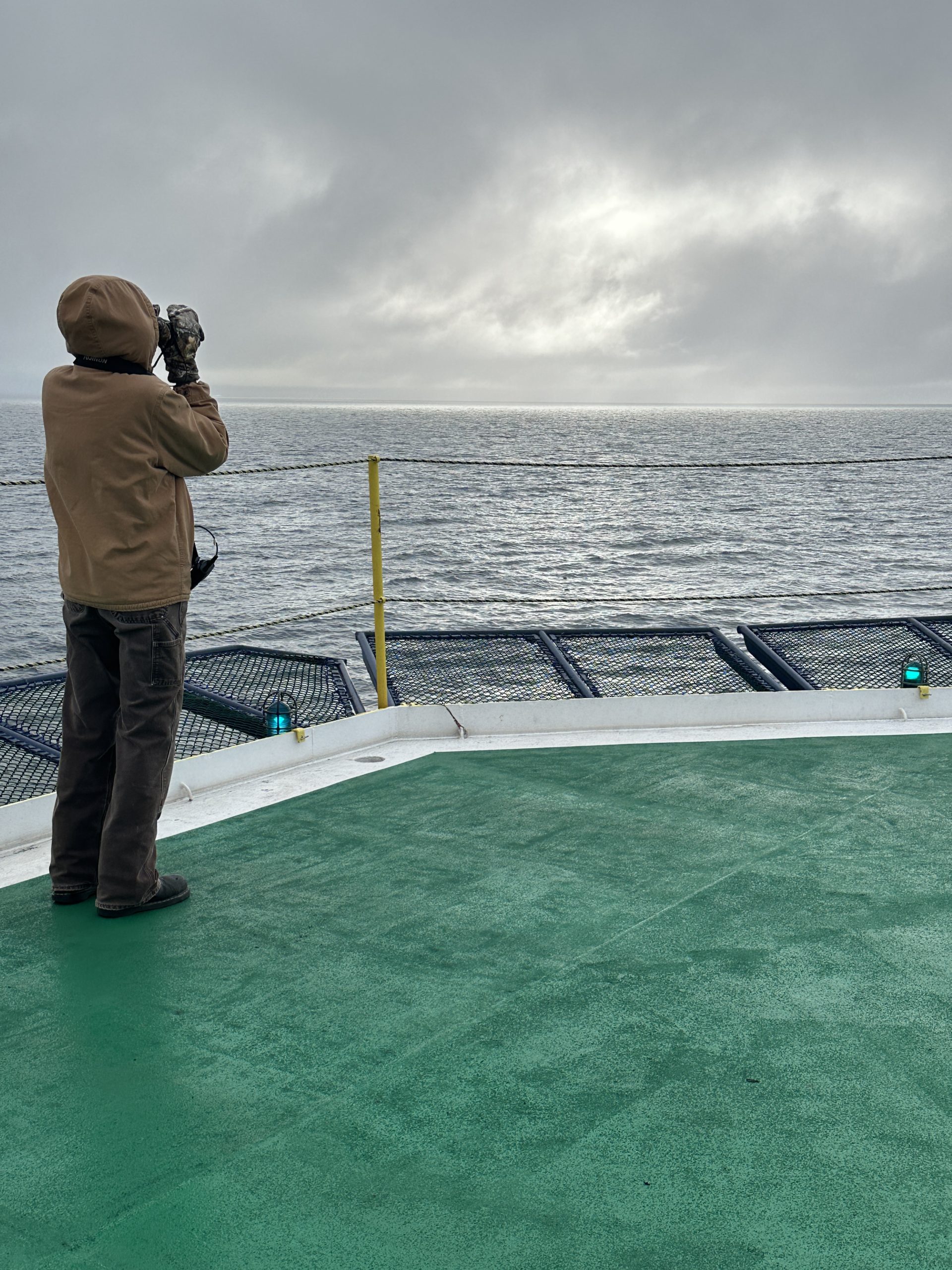
With a two-way radio and binoculars on hand, team members scanned the seas for animals who may have strayed dangerously close to the seismic air gun’s work. The objective was to take note of diving birds, sea mammals and turtles.
Distances were difficult to determine, so any marine life from the ship to the horizon was reported. Exclusion Zones (EZ) were set for each site and factor in depth and visibility. Whether a sighting was within or beyond the EZ, all sightings were reported. During IODP Expedition 400, off the coast of northwest Greenland, the EZ was 100 meters for diving birds and 940 meters for sea mammals and the occasional turtles that found themselves in the Arctic. For sites where the water depths were shallower than 1,000 meters, the zone for sea mammals and turtles was within 1,410 meters. This was because in shallower waters, air gun sound waves travelled farther, so the area affected was greater.
What Data Do the Observers Collect?
The following information recorded by the observers included:
- Time of sighting (ship’s local time)
- EZ status (IN, OUTSIDE moving towards, OUTSIDE moving away, OUTSIDE unknown)
- Direction spotted relative to the ship’s heading and air gun location.
- Direction moving relative to the ship’s heading and air gun location.
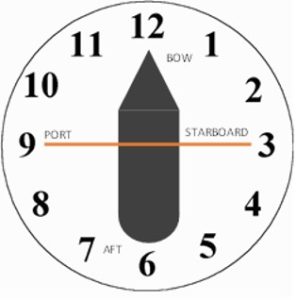
Observers use the hour system with
the bow at 12 o’clock (Credit: IODP JRSO VSP Watch Stander Guide)
Tracking Takes Focus!
This job presented unique challenges. Tracking marine animal activity amidst rolling seas and rocking ships demanded complete concentration. Complicating matters further were the elusive nature of some species and the difficulty in accurately gauging distances. Consequently, the Watch Team members were extra-vigilant and erred on the side of caution.
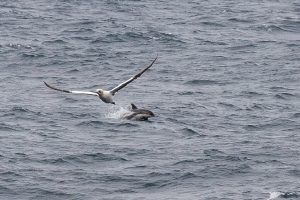
Regardless of the distance from the ship, all sightings, excluding ice, were required to be reported using hand-held radios. Observers made every effort to keep their eyes on the sighted object and to determine if it was moving towards or away from the air gun location. If the sighting was lost, they assumed the presence of a protected species in the zone and waited an hour before resuming operations.
Unpredictable weather added yet another layer of complexity. Rainbows following a gentle mist could change within minutes to flurries. If fog or adverse weather obscured the horizon, then the watch and any VSP activity was called off until visibility improved.
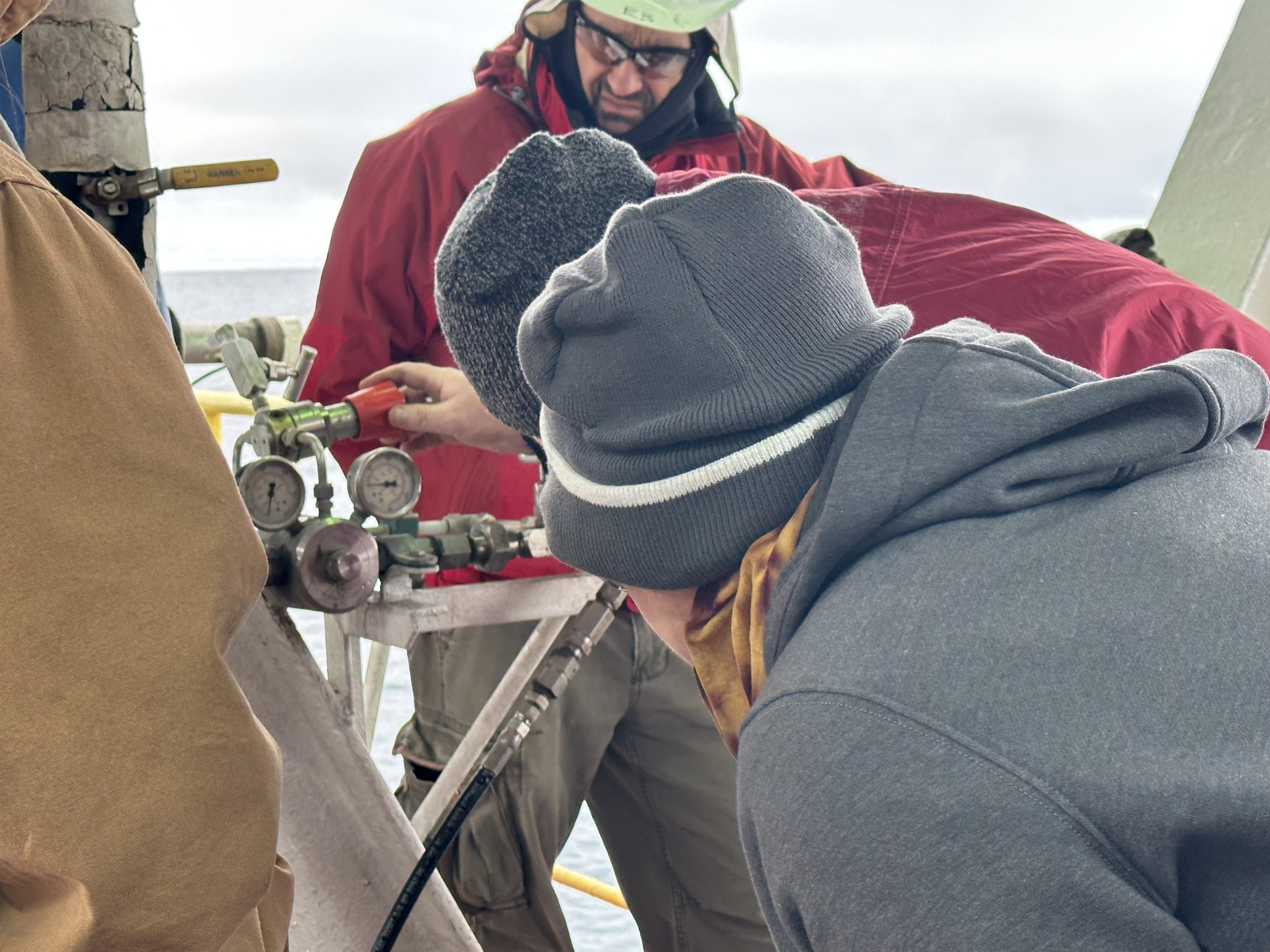
What are the Responsibilities of the Gun Watch?
Gun Watch members continuously communicated with the other observers and recorded the air gun firing activity including: time of shot, air pressure, deployment and retrieval time. When a sighting was reported, the Gun Watch was required to immediately suspended shooting. The Captain or the Lab Officer decided when it was safe to resume, referring to a decision chart.
And What About That ‘Soft Start’ Business?
The goal during VSP is to protect and warn, but not startle any sea. So, a gradual increase or “soft start” in seismic energy is applied. Using a portable battery, the Gun Watch would initiate the “soft start” of the seismic source. Shots started at 500 pounds per square inch (psi), with the pressure increasing by 25 psi every 30 seconds, until it reached 2000 psi. This allowed marine animals to detect and react to the noise gradually, reducing the likelihood of startling them or causing harm. Any sightings within the EZ would halt the “soft start.”
By following strict protocols and promptly reporting sightings, the JOIDES Resolution PSO teams contributed to both scientific research and environmental conservation, ensuring that the exploration of the seafloor was conducted responsibly and with full consideration for marine life.
Take a look at this video which shows the tools of vertical seismic profiling, the gun watch and air gun deployment.

